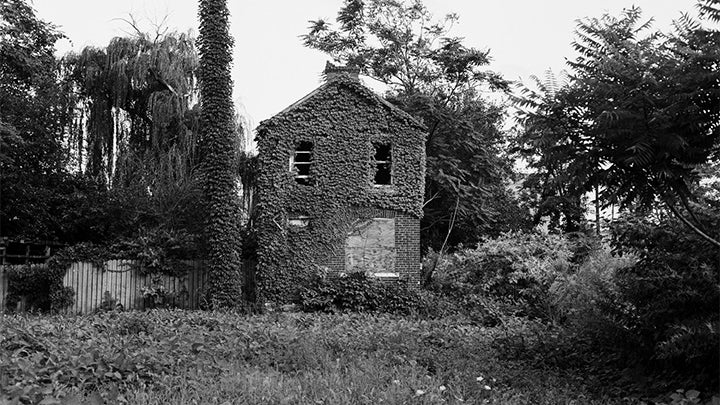Braddock looks to art to raise it up but the art it inspires isn’t buying it, yet

Home on Sixth Street and Washington Avenue, 2009 (LaToya Ruby Frazier)
A look at some recent work about Braddock, the documentary “Braddock, America” and a book of photographs called “The Notion of Family.”
Braddock, a depressed steel town outside of Pittsburgh, has been attracting art and artists. It’s post-industrial gritty, with blight and industry woven together with overgrown vines and history, so if you’re into that sort of thing, it’s rich material. It also has plenty of cheap real estate, the kind artists like, and artists have the support of the town’s mayor. Mayor John Fetterman started Braddock Redux to organize art and community events and he’s offered free studio space to artists. He has spoken about the power of art to bring social change, saying things like, “we use art to combat the dark side of capitalism.”
It’s one thing to use art to save Braddock. But what does the artwork Braddock inspires say about the place?
Two recent projects to come out of Braddock are the documentary “Braddock, America” and a book of photographs by LaToya Ruby Frazier called “The Notion of Family.”
The film is a portrait of Braddock, a conglomeration of sentimental and angry voices – one of the directors, Gabriella Kessler, calls it a chorus – that contrast the contemporary depression of the town with its brighter days, when the steel mill employed ten times more people than it does today. The question she and French co-director, Jean-Loïc Portron, asked the people they interviewed was: What happened to Braddock? And the answers the chorus provides imply a crime on a vast scale, with some implicating that “dark side of capitalism.”
In “The Notion of Family,” a much more personal work, Frazier parallels the dissolution of the steel mill with that of her own family and her family’s health. Unlike Kessler and Portron, Frazier is from Braddock. Her story is focused on the African American experience in Braddock – a story often omitted, she writes in her book, in the public discourse. “I believe that visual, documented evidence has the ability to counter myths, omissions, and distortions,” Frazier writes of her motivations. The Pittsburgh Survey, a sociological study of the city from the early 1900s, helped her define her approach. “Lewis Hine, who took part in the Pittsburgh Survey as a photographer, saw himself as a sociologist using the camera as a tool for social reform. This is a growing constant thought in my practice. In the current redevelopment of rust-belt towns like Braddock, Pennsylvania, the oversight and erasure of the most vulnerable residents’ realities is an issue that is inherently a part of my work.” Today, Braddock’s remaining population is majority African American.
The book ends with photos of the Braddock hospital, leveled. The photographer’s grandmother, in a casket. A house in Braddock, overgrown and blighted. Also, a sign that reads: ‘Jesus said! You MUST be born again!’ A hint of metaphoric optimism? The sign is fading, though.
Keystone Crossroads has reported on the use of art and artists to revitalize other depressed towns. Artists are often a sign of redevelopment to come, also of gentrification. The film’s directors are not local and Frazier no longer lives in Braddock, either. They’re not the ones Fetterman has teamed up with in the fight for Braddock. But they might still have some insight.
Gabriella Kessler said “Braddock, America” has been criticized by some for not being hopeful enough and for not offering solutions. But hope, she said, needs to be tempered with reality. For example, when asked why they chose not to include anything about the town’s grassroots arts initiatives or the vast urban farm that now grows in the shadow of the still smoking Edgar Thomson Steel Works, Kessler said, “when you edit you can always make things look a certain way. I don’t think that the [farm] necessarily holds [its] weight against what the steel mill was.” In other words, the new story of using “art to combat the dark side of capitalism” hasn’t yet gathered enough steam to supplant the story of loss remaining Braddock residents still have on their lips.
WHYY is your source for fact-based, in-depth journalism and information. As a nonprofit organization, we rely on financial support from readers like you. Please give today.


